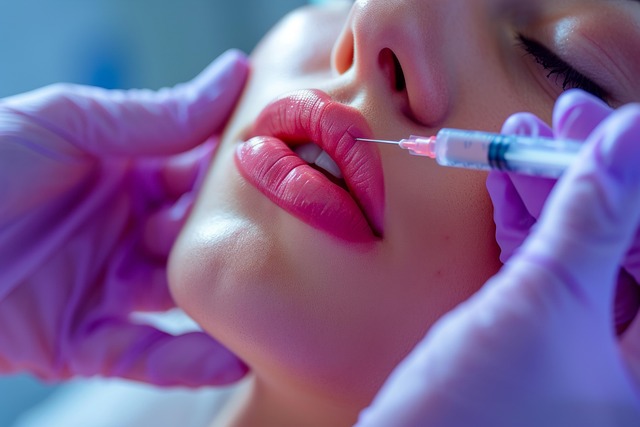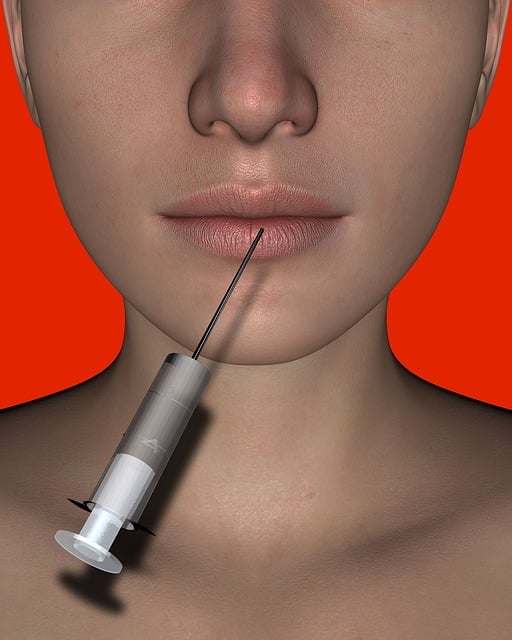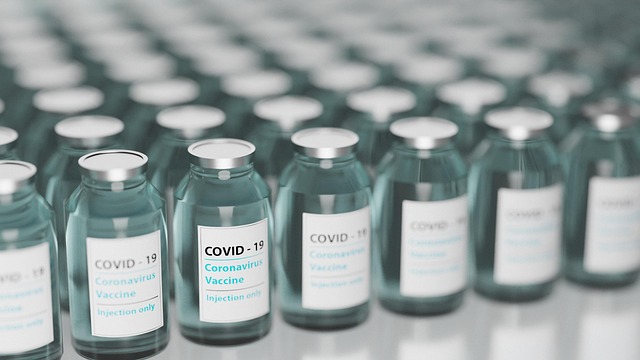Botox injections and under-eye filler treatments have become popular non-surgical solutions for reducing fine lines and puffiness around the eyes. These procedures, using advanced techniques and high-quality hyaluronic acid fillers, instantly transform the eye area, boosting youthfulness. Benefits include quick results with minimal downtime, making them attractive alternatives to traditional surgical methods. However, risks such as temporary swelling, bruising, and rare severe reactions exist, emphasizing the importance of expert guidance from qualified dermatologists or medical aestheticians for safe and effective outcomes. Proper post-treatment care is crucial to maximize results and minimize side effects.
“Discover the transformative power of under-eye filler injections, a growing trend in cosmetic enhancement. This comprehensive guide explores the intricate world of non-invasive procedures, focusing on Botox injections for addressing fine lines and dark circles. Learn how these treatments work, from the science behind dermal fillers to candidate selection and potential risks. By delving into these aspects, we empower you with knowledge, ensuring informed decisions regarding this popular and effective skincare solution.”
Understanding Under-Eye Filler Injections: A Comprehensive Overview

Under-eye filler injections have emerged as a popular non-surgical aesthetic procedure, offering a targeted approach to combat the signs of aging around the delicate eye area. This treatment involves the strategic placement of dermal fillers beneath the skin’s surface to smoothen fine lines and reduce the appearance of puffiness or hollows under the eyes. By enhancing the volume and contour of this sensitive region, these injections can instantly brighten one’s complexion and foster a more youthful gaze.
The procedure leverages advanced techniques and high-quality fillers, often composed of hyaluronic acid, to integrate seamlessly with the body’s natural moisture content. One of the most commonly used treatments in this category is Botox, which, besides its well-known role in smoothing facial expressions, can also be utilized to relax specific muscles under the eyes, reducing dynamic wrinkles and enhancing overall eye health. This comprehensive overview aims to demystify the process, highlighting its benefits, potential risks, and the expert guidance necessary for achieving optimal results.
How Botox Injections Work for Under-Eye Concerns

Botox injections have emerged as a popular and effective solution for addressing under-eye concerns, particularly in reducing the appearance of fine lines and wrinkles. The treatment involves injecting a small amount of botulinum toxin into specific muscle groups around the eyes. This powerful neurotoxin temporarily paralyzes the muscles, preventing them from contracting and causing the skin to smoothen out, thus minimizing the depth of facial lines.
The magic of Botox Injections lies in its ability to target dynamic lines that form when we smile, frown, or squint. By relaxing these muscles, it prevents the repetition of these expressions, which over time can contribute to deep wrinkles and hollows under the eyes. This non-surgical procedure offers a quick, safe, and effective way to achieve a more youthful appearance without any significant downtime.
Benefits and Advantages of Under-Eye Filler Treatments

Under-eye filler treatments offer a plethora of benefits, making them a popular choice for those seeking to enhance their appearance. One of the key advantages is their ability to reduce the appearance of fine lines and wrinkles around the eyes, an area often considered one of the most delicate and challenging to treat. These fillers are designed to add volume and hydration to the skin, smoothing out any imperfections and creating a more youthful and rested look.
Additionally, under-eye filler injections provide a non-invasive and quick procedure compared to other anti-aging treatments like Botox Injections. The process is generally well-tolerated, with minimal downtime, allowing individuals to return to their daily routines almost immediately. This makes it an attractive option for busy individuals who still want to achieve a rejuvenated appearance without extensive recovery periods.
The Science Behind Dermal Fillers in the Eye Area

Under-eye filler injections are a cosmetic procedure that involves injecting dermal fillers into the delicate skin beneath the eyes. These fillers, often composed of hyaluronic acid, work by plumping and hydrating the skin, reducing the appearance of fine lines, wrinkles, and hollows commonly associated with aging or fatigue. The science behind this procedure leverages the natural properties of hyaluronic acid to enhance volume and smooth out texture in the eye area.
Unlike Botox injections that primarily target muscle movement, under-eye fillers focus on restoring the skin’s structure and moisture balance. This non-invasive approach can provide immediate results, making it a popular choice for those seeking a youthful glow without surgery. The procedure is relatively quick and comfortable, with minimal downtime, allowing individuals to return to their daily routines promptly.
Candidate Selection: Who is a Good Fit for This Procedure?

Under-eye filler injections are a popular aesthetic procedure for those seeking to reduce the appearance of fine lines and wrinkles around the eyes. The ideal candidate for this treatment is someone who has mild to moderate signs of aging in the periorbital area, including crow’s feet, eye bags, or hollows under the eyes. It is essential to have realistic expectations and be committed to following post-procedure care instructions.
A good fit for under-eye filler injections are individuals who do not smoke or have a history of poor wound healing, as these factors can affect treatment outcomes. Additionally, patients should be in overall good health and have no active skin infections or allergies that might complicate the procedure. Consulting with a qualified dermatologist or medical aesthetician is crucial to determine if Botox injections are the right choice and to ensure the best possible results.
Potential Side Effects and Risks to Consider

While under-eye filler injections are a popular cosmetic procedure, it’s crucial to be aware of potential side effects and risks before proceeding. As with any medical treatment, there are considerations to keep in mind. Some common temporary side effects include mild swelling, bruising, redness, or discomfort around the injection site. These usually subside within a few days but can last up to two weeks. More severe reactions are rare, but they can occur, including allergic reactions, infection, or asymmetry in the treatment area.
Another key risk to consider is the potential for an uneven or unnatural appearance if the filler is not administered correctly. Improper placement or excessive use of filler can lead to a “caked” or lumpy look under the eyes, which may require additional treatments to correct. Additionally, it’s important to remember that results are not permanent, and follow-up injections will be needed to maintain the effects, adding ongoing costs to consider. Therefore, thorough consultation with a qualified professional is essential before undergoing this procedure.
Post-Treatment Care and Recovery Guidelines

After receiving under-eye filler injections, proper post-treatment care is essential for optimal results and to minimize potential side effects. It’s crucial to follow your dermatologist or healthcare provider’s instructions carefully during the recovery period. For the first 24 hours, avoid any strenuous activities, heavy lifting, or extreme temperatures, as this can increase swelling and bruising. Rest with your head elevated to reduce swelling and apply a cold compress for 10-15 minutes at a time, several times a day, to minimize puffiness.
Avoid touching or rubbing the treated area, and refrain from using makeup until advised otherwise. It’s recommended to stay hydrated by drinking plenty of water and to avoid alcohol consumption for a few days post-procedure. Discomfort is typically minimal but may include mild swelling, bruising, or a stinging sensation. If any severe symptoms persist or you have concerns, contact your healthcare provider immediately. Remember, proper aftercare ensures the best outcomes from your Botox injections.
